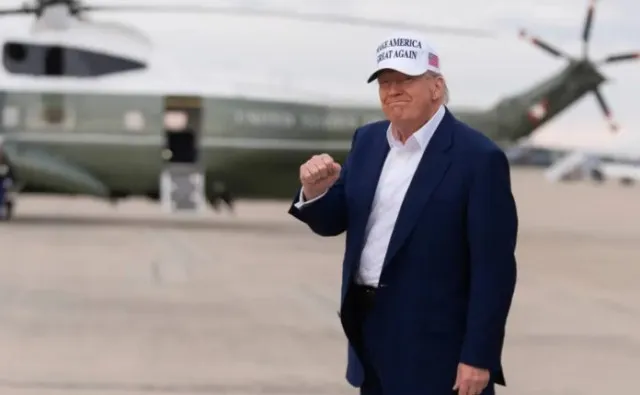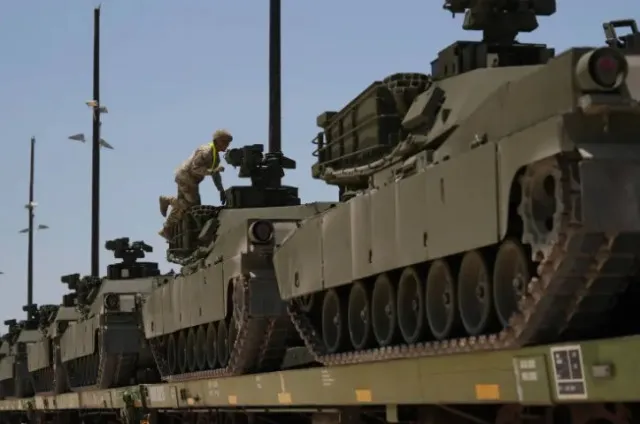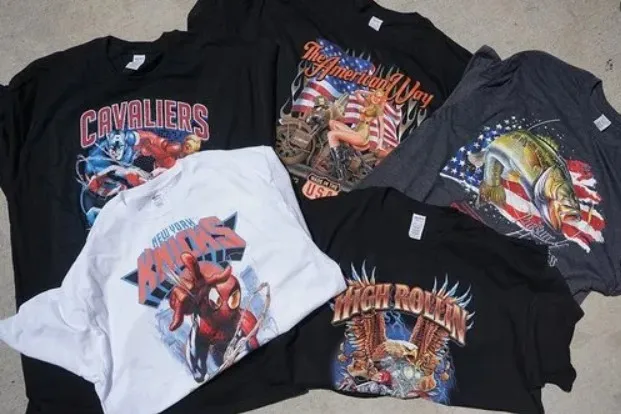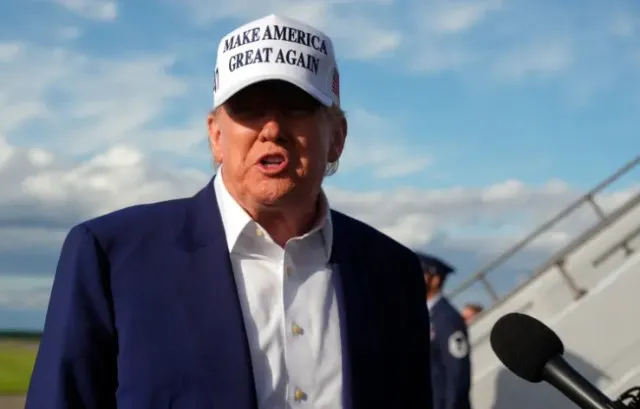Donald Trump says his trade policies focus on boosting U.S. tank and tech production rather than supporting T-shirt manufacturing.
President Donald Trump recently clarified the focus of his tariff policies.
He emphasized boosting domestic military and tech manufacturing, not producing traditional textiles like sneakers and T-shirts.
Speaking to reporters before boarding Air Force One in New Jersey, Trump reiterated his administration’s priorities.
He emphasized focusing on high-tech industries and defense production. This stance has sparked debate among industry groups.
“We’re not looking to make sneakers and T-shirts. We want to make military equipment. We want to make big things. And we want to make, do the AI thing,” Trump said.

Tariff policy targets heavy industry and technology
Trump cited Treasury Secretary Scott Bessent’s view that a booming textile industry is not vital for America’s economy.
The president agreed, saying he wants the U.S. to lead in military gear, AI, chips, tanks, and ships.
According to Trump, these sectors represent the “big things” that will drive national growth and security.
Consumer goods like socks and T-shirts can be made elsewhere more cheaply.
“I’m not looking to make T-shirts, to be honest. I’m not looking to make socks.
We can do that very well in other locations. We are looking to do chips and computers and lots of other things, and tanks and ships,” Trump said.

Apparel industry voices concern over tariffs
The American Apparel & Footwear Association (AAFA) responded critically to Trump’s remarks.
“With 97% of the clothes and shoes we wear being imported, and with clothes and shoes already the most highly tariffed industry in the US, we need to focus on common-sense solutions that can move the needle,” AAPA President Steve Lamar said in a statement.
“More tariffs will only mean higher input costs for US manufacturers and higher prices that will hurt lower income consumers.”
AAFA President Steve Lamar warned about the impact of more tariffs. He said they could increase costs for manufacturers.

This would lead to higher prices that hurt lower-income consumers the most.
The association called for pragmatic solutions to strengthen the industry rather than escalating trade restrictions.
Trade tensions escalate amid new tariff threats
Trump’s trade agenda has disrupted global markets with tariffs reshaping international trade dynamics.
He recently announced a 50 percent tariff on EU imports starting June 1, causing tensions with key trading partners.
He also threatened a 25 percent tariff on imported iPhones, potentially affecting U.S. consumers and businesses.
However, Trump delayed the EU tariff deadline to July 9, allowing time for talks with the 27-nation bloc.

Political roots of Trump’s manufacturing focus
Trump’s tariff approach strongly appeals to working-class voters.
Many of these voters have been hurt by decades of industrial decline and job losses in U.S. manufacturing.
His wins in the 2016 and 2024 presidential elections partly stemmed from promises to revive American manufacturing.
He pledged to protect domestic industries from foreign competition.
The tariffs put campaign promises into action to boost U.S. investment and create jobs.